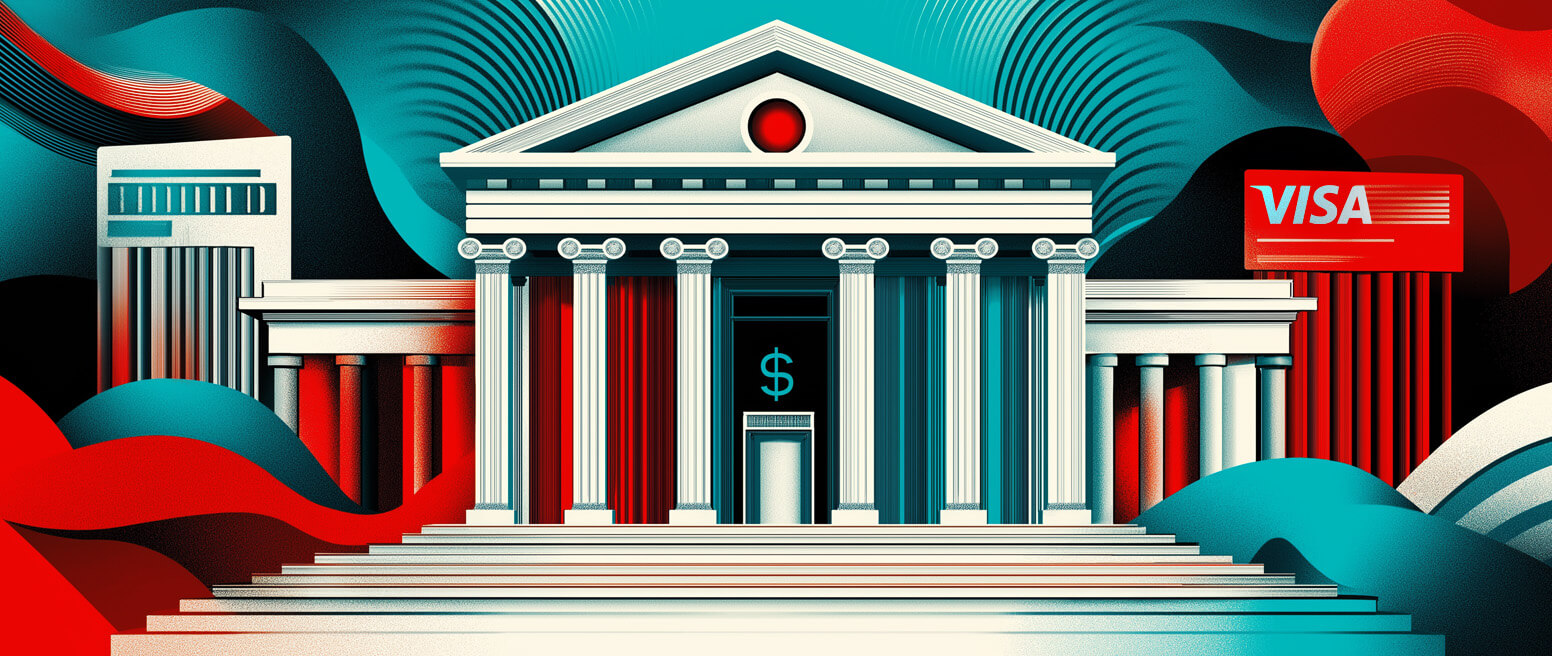Rapid Dispute Resolution — or RDR — Can Help You Prevent Disputes & Keep Customers Happy
No merchant likes product returns. That said, a return is better than a chargeback, any day.
With Rapid Dispute Resolution (RDR), you now have the opportunity to issue credits to customers automatically and in real-time. This means customers get a permanent resolution in seconds. For you, that means avoiding a lot of disputes that might otherwise devolve into costly Visa chargebacks.
Learn more about Visa chargebacksRDR is currently live and available to all Visa sellers and acquirers. As of April 19, 2021, RDR is active for all Visa issuers as well, unless they opt out by submitting a form through Visa Resolve Online (VROL).
Recommended reading
- Verifi Order Insight: Using Data to Block Visa Disputes
- Visa Chargeback Rules: Your “A-to-Z” Guide for Visa Disputes
- Visa Chargeback Time Limits: The 2025 Guide
- What is the Visa Arbitration Process for Chargebacks?
- Visa Acquirer Monitoring Program: Major Visa Updates in 2025
- Visa Authorization Rules: Changes to Time Frames & Options
What is Rapid Dispute Resolution?
- Rapid Dispute Resolution
Rapid Dispute Resolution (RDR) is a merchant dispute product from Verifi. RDR allows merchants to create rules and set parameters that dictate which disputes they’d like to automatically accept and provide funds back to the cardholder, thereby preventing a chargeback for these transactions at the pre-dispute stage.
[noun]/rap • əd • dis • pyo͞ot • rez • ə • lo͞o • SHən/
Rapid Dispute Resolution is a platform intended to help merchants and issuers enhance the customer experience, reduce disputes, and improve operations. The goal is to make it easier for banks to serve their clients in a quick, effective manner by automatically resolving disputes and issuing refunds according to preset rules.
RDR is an improved chargeback prevention tool available through Visa systems. It allows issuers and acquirers to resolve disputes automatically which, in turn, keeps merchant chargeback rates low and customer satisfaction high.

How Does RDR Work?
When an RDR-participating issuer submits a dispute for an eligible transaction with an RDR-participating merchant, that inquiry is at a stage called a pre-dispute. This is because the case hasn’t yet escalated to a chargeback. It’s at this pre-dispute stage that one of three things happens:
- Auto-decision rules resolve the dispute automatically.
- The merchant reviews and credits the customer manually.
- The pre-dispute proceeds to a standard dispute.
When a pre-dispute is resolved with RDR, a credit goes to the cardholder using Visa's existing dispute financial messaging. In essence, there is no dispute because you accept liability. Any transaction resolved with RDR will be identified as an RDR-resolved transaction, not as an actual dispute, meaning your dispute ratio will not be negatively impacted.
Setting Custom Rules Using Rapid Dispute Resolution
You can set custom rules to preselect which chargebacks you want to resolve using RDR, saving additional time and money.
The rules you use to determine which disputes to refund are highly customizable. You can add the following factors to your ruleset:
- Issuer BIN
- Transaction date
- Authorization date and time
- Transaction amount
- Transaction currency code
- Purchase identifier
- Dispute category
- Dispute condition code
Using these rules, RDR can automatically refund the transaction on your behalf, letting you avoid a chargeback. This will make it easier to avoid breaching Visa chargeback thresholds.
To illustrate, let's say you want to automatically credit buyers for any dispute involving a transaction under $10. You’ve crunched the numbers and determined that it simply isn’t worth engaging in representment for transactions at this price point. You can create that rule and let the system automatically carry out that function.
Another benefit of RDR is the near-touchless experience; you can effectively "set and forget" these rules. You won’t have to touch them again unless you decide they need an adjustment.
Does RDR Actually Help Reduce Chargeback Costs?
Yes. By minimizing chargeback issuances, RDR can help you lower your chargeback ratio and avoid chargeback fees.
Yes, RDR can help reduce chargeback issuances.
Here’s another example: let’s assume a customer disputes a transaction. Rather than going directly to the chargeback process, the RDR decisioning engine checks the dispute against a preassembled rule set (determined by you). This lets the system determine if you should accept liability for the dispute and provide a credit.
If you accept liability, then the case is closed, and you avoid the chargeback permanently. You still have to return the funds, but you avoid a chargeback fee.
Benefits of RDR:
- Automate processes
- Customize your fraud rules
- Prevent chargebacks
- Reduce false positives
- More sales and higher conversion
- Reduce friction
Non-fraud disputes that are resolved using pre-dispute tools like RDR and CDRN will not count against your chargeback ratio. But, Visa still counts disputes issued with a "Fraud" reason code against you, even if you resolve them with RDR. This highlights the importance of proactive chargeback prevention.
What is the difference between RDR, CDRN, & Order Insight?
RDR should be one component of your fraud and chargeback prevention strategy — not the entirety of it. Consider deploying other Visa tools like Order Insight and the Cardholder Dispute Resolution Network (CDRN), which work in conjunction with RDR.
As I always tell merchants, the best chargeback prevention strategies are multifaceted. You should have more than one preventative measure in place at all times. To accomplish this, Visa promotes a variety of tools to assist you at every stage of the dispute cycle.
Beyond Rapid Dispute Resolution, Visa also offers tools like Order Insight and the Cardholder Dispute Resolution Network (CDRN). These tools can work together with RDR as complementary components of your chargeback prevention strategy.
Intermediary
Dispute aversion by providing necessary documents and context
Preventative
Alert merchants about pending chargebacks
RDR would come in at the last moment to prevent a chargeback if CDRN and Order Insight had both been attempted.
How to Get Started With Rapid Dispute Resolution
After enrolling with Rapid Dispute Resolution, you can set custom rules, and have the system automatically resolve disputes. After the dispute, you record the activity in your CRM, and analyze outcomes to identify patterns and address recurring issues.
Rapid Dispute Resolution can be extremely beneficial for merchants… when used correctly, of course.
Before diving in, you need to know how to use RDR and when. So, let’s go over that process, step by step.
#1 | Enrollment
According to Verifi, enrolling in RDR is pretty straightforward. Just contact your relationship manager or customer support representative to get started. This may be Verifi, if you work with them directly, or it may be your bank, or a third-party facilitator.
CDRN clients can simply sign an addendum to the Seller’s CDRN Agreement. All other Verifi clients can set up a new contract for RDR.
To initiate set-up, sellers have to complete an enrollment form that identifies their BIN/CAID(s) and the unique acquirer identifiers (your acquiring bank). Next, the seller will define decision rules and parameters, and provide them to Verifi to enter into the system. Once completed, the seller will have full implementation of RDR.
#2 | Set Rules
RDR is a semi-automated dispute response platform. It’s designed to intervene and respond to certain disputes and accept — or deny — liability on your behalf. To that end, the platform grants your acquirer permission to debit your account for funds in the event of a disputed transaction.
This means the platform will intercept and respond to disputes in real-time. It will issue automatic refunds for the disputed amount customers, assuming the transaction meets a pre-selected set of rules chosen by you. Of course, this also means that you are allowing RDR to assume agency for that transaction on your behalf, which is why you should choose your ruleset very carefully.
#3 | Resolve Disputes
RDR works in the background to keep your dispute responses timely and tidy. The program is designed to kick in before a chargeback is filed. Essentially, when a customer disputes a charge with a participating bank, their bank will first communicate through Visa Resolve Online (VROL). This is a bank-facing platform which lets the issuer recall information to potentially resolve inquiries before a dispute.
Once the case has been recalled through VROL, the bank will look to see what (if any) dispute resolution platforms are available. If you use Order Insight, for instance, that platform will assume the next steps. Otherwise, the dispute will be submitted to RDR, and act according to your predetermined dispute response ruleset.
#4 | Reconciliation
Dispute notices will be sent to your acquirer, and then your acquirer will notify you. Once liability has been accepted for the dispute and your account has been debited for the amount, it’s time to record the activity in your CRM or order management system.
Visa’s reporting process for RDR activity is very similar to their reporting process for chargebacks. Dispute notices are sent to your acquirer, who then notify you of the automatic debit.
#5 | Analyze Outcomes
Analyzing the data you gain access to through RDR is perhaps the most important step in this process. Data analysis is a crucial element for any business, particularly if you’re frequently targeted by disputes and chargebacks. The information cleaned through complex data analysis can be invaluable on several levels.
Analyzing dispute data can help you:
- Diagnose dispute triggers
- Identify and resolve dispute patterns
- Calculate ROI
- Optimize best practices
Tracking Rapid Dispute Resolution Data as a Key Performance Indicator
You have to keep detailed records for dispute reconciliation post-RDR. The reason for this is to ascertain what rulesets are serving your business and which might not be the best fit. For instance, reconciliation can help you:
- Keep track of RDR funds that were debited from your account.
- Differentiate between RDR dispute debits and traditional refunds
- Cancel any subscription charges relating to that transaction
- Cancel any ongoing services or block access to digital goods or services
- Stop fulfillment if the merchandise hasn’t been shipped
- Update black and whitelists, where necessary
You’ll receive daily updates on refund information from Visa. This data can't help you recover money from transactions that have already been overturned. However, it will be useful to help adjust your rules for the future. Pay close attention to this information, and remember to make periodic changes as needed.
You need to ensure that you're capable of reconciling this new refund data if you’re using a CRM or legacy system to manage customer data. Transactions cannot be credited through RDR and then resubmitted as a dispute. However, if data is handled improperly on your end, it could result in double refunds or other mistakes.
Making RDR Work for You
Rapid Dispute Resolution can be a great asset in the fight against chargebacks. This is especially true if you fall into any of the following categories:
- You’re close to breaching — or have already breached — the Visa chargeback threshold.
- You’re currently enrolled in the Visa Dispute Monitoring Program.
- You operate in a high-risk vertical or sales model.
- A significant share of your transactions are for low-ticket items.
You need to carefully consider which rules you want to apply for those automatic refunds if you decide to take advantage of RDR. You can’t fight a dispute that has a legitimate basis in criminal fraud or merchant error, so it’s best to refund these. This requires customized rule sets that are tailored to your unique needs as determined by your own transaction data.
There are some disputes which you may want to progress to the chargeback stage, because the claim is blatantly false. But, if you resolve a dispute through RDR, you won’t have the chance to challenge the claim through representment and thereby recover revenue from the disputed transaction.
Even after entering the program, it would be wise to keep tabs on your refund rate. If you see refunds start to spike and exceed your comfort level, and you’re not at immediate risk of exceeding chargeback thresholds, you should refine your RDR rules.
You could also consider working with a third party to help make RDR work for you.
Chargebacks911® are certified Visa RDR facilitators. Our experts have decades of experience navigating complex industry regulations and practices. We can help you optimize your Visa Rapid Dispute Resolution rule sets to prevent chargebacks while avoiding unnecessary refunds.
Want to learn how much you could save? Click below and get started today.
FAQs
What is the rapid dispute resolution process?
Rapid Dispute Resolution (RDR) is a merchant dispute product from Verifi. RDR allows merchants to create rules and set parameters that dictate which disputes they’d like to automatically accept and provide funds back to the cardholder, thereby preventing a chargeback for these transactions at the pre-dispute stage.
What is the difference between RDR and CDRN?
Rapid Dispute Resolution deals specifically with automating refunds for Visa transactions. On the other hand, the Cardholder Dispute Resolution Network (CDRN) will notify merchants of pending chargebacks, but will still require the merchant to manually issue a refund within 72 hours.
Can merchants customize RDR rules?
The rules you use to determine which disputes to refund are highly customizable. You can base them on a variety of factors, including transaction value, original transaction date, chargeback reason code, currency code, or card issuer BIN, to name just a few.
Can RDR help prevent friendly fraud?
No. A buyer who knows how to manipulate the system by making false claims can bypass you to obtain an automatic refund after a transaction. And, since there’s no chargeback to represent, there’s no opportunity to challenge the buyer’s claim. With the benefit of reporting, you can enhance fraud screening by blocking future uses of the card. Still, it's an important point to keep in mind when setting rules for which charges to refund automatically.
Does RDR actually help reduce chargeback costs?
Yes! Rather than going directly to the chargeback process, the RDR decisioning engine checks the dispute against a preassembled rule set (determined by you). This allows the system to determine if you should accept liability for the dispute and provide a credit. If you accept liability, then the case is closed, and you avoid the chargeback permanently.
What is an RDR alert?
An RDR alert is a chargeback alert generated by Visa’s Rapid Dispute Resolution (RDR) system that informs a merchant about an incoming dispute. Upon receiving an alert, the merchant can use RDR to automatically and pre-emptively refund the cardholder, thus preventing a full-blown dispute.
How much does Verifi RDR cost?
Beginning January 1, 2025, Visa and Verifi standardized the cost of RDR across all merchant categories to a flat rate of $19 per RDR alert.















